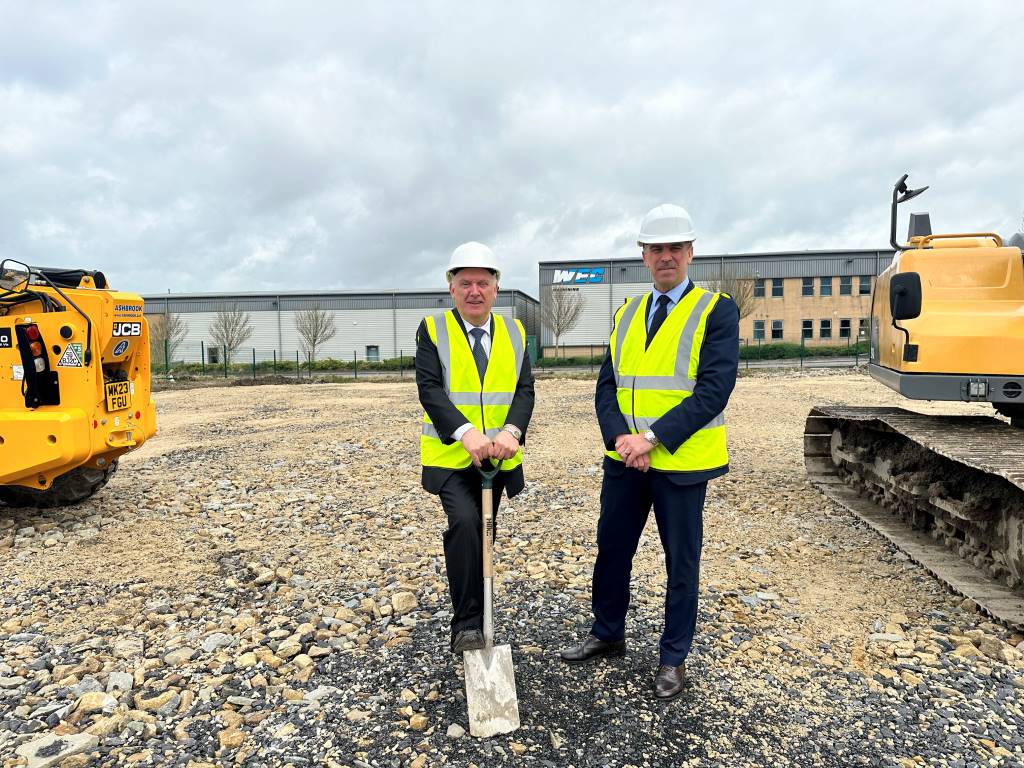Bloodhound reaches final stages of build before high speed tests

British supersonic land vehicle, Bloodhound LSR, has reached the final phase of its build programme as it prepares to head to South Africa.
The project aims to beat the land speed record (LSR) and reach 1,000mph. Once in South Africa it will be put through its paces in a series of high speed shakedowns on the vast Hakskeenpan desert, Northern Cape.
It will be the Bloodhound team’s hardest test to date as the car builds speed over 13 runs in steady 50 mph increments between mid-October and mid-November, culminating in speeds of 500+ mph.
That’s as fast as a commercial airliner’s cruising speed, but on solid ground, and would immediately place it amongst the 10 fastest cars of all time.
The project is now split into two phases. Phase one’s target is to break the World Land Speed Record, currently 763.035 mph. This is necessary to understand how the car behaves as it enters the transonic stage initially and then supersonic speed levels.
Upon the successful completion of phase one, the team will review the data and technical challenges before embarking on phase two, and the challenge of safely reaching 1,000 mph.
Typhoon power
Powering this machine will be an EJ200 jet engine. Produced by Rolls‑Royce, the jet engine normally found on the Eurofighter Typhoon fighter jet creates nine tonnes of thrust, equivalent to approximately 54,000 thrust horsepower.
The jet engine will be aided by a monopropellant rocket system adding extra thrust when the Bloodhound LSR car attempts to break the land speed record in 12 – 18 months’ time.
Bloodhound CEO Ian Warhurst explained: “I’ve really enjoyed watching the team rise to the challenge over these past 6 months. Something which has been talked about and planned for so long is now really happening – and the team have taken it in their stride. Our fantastic new location in the centre of a technical college at UTC Berkeley has really helped the project come alive – the project is now in new territory.
“It’s also very important to remember that the team in South Africa have also risen to the challenge. After so much work and several false starts, the Northern Cape Provincial Government didn’t hesitate to re-engage and have worked quickly and efficiently to help us finalise agreements and then mobilise the local workforce. This in return has brought much needed employment to the area to help us clear and prepare the track.
“So that’s it – we are off to South Africa to start putting the car through its paces. This is engineering at its best and I look forward to everyone joining us online as the action unfolds this autumn.”

Final checks
Prior to departure, one of the final installation checks of the car’s engine is to ‘dry crank’ it, checking all the systems are correct and working perfectly. This involves running through the start-up sequence and turning it over with no fuel or ignition.
A dry crank test is a crucial stage of the pre-testing programme as it confirms the engine and all its ancillary systems, fuel and electrics are correctly installed and ready to fire up once the car is in the full system test, confirming the engine can be started.
To perform the test the team will use an Air Start Cart (a small jet engine) to blow high pressure air into the onboard Aircraft Mounted Accessories Drive (AMAD) gearbox, which will both spin the jet’s turbine up to required speed and, once spinning, generate 3-phase AC power for the car, which then sends power to the jet engine’s fuel pumps.
Travel arrangements
Moving the 6.4 tonne Bloodhound LSR 5,500 miles (9,000 km) from the UK to South Africa throws up major logistical challenges in itself.
Much of the heavy support equipment, including the car’s trailer, has already set off to make the long journey by sea, but the car itself will travel via air freight to ensure it isn’t subjected to any uncontrolled shock loads that could damage it in transit.
The EJ200 jet engine will travel mounted inside the upper chassis, which is where you would find it in its natural home inside the Eurofighter Typhoon. The two-metre-high tail fin, which is the same size as that found on a Red Arrows display jet, has been removed and will travel upright in a wooden crate, along with some sections of the composite bodywork.
Solid aluminium wheels
The car will be fitted with the wheels shod with pneumatic tyres that were used for UK runway testing at Cornwall Airport, Newquay, in October 2017, where they carried the car at speeds of up to 200 mph.
For testing in South Africa, the wheels will be changed from pneumatic to solid aluminium discs to cope with the high speeds and desert environment. The 90 kg desert wheels are produced by a consortium of partners including Castle Precision Engineering, who recently balanced the wheels to ensure they conform to Class G2.5, the same as aircraft turbine blades. This involves an exacting process of shaving microns of aluminium from the spinning discs to ensure they’re perfectly balanced and ready for the desert.
This stage of the testing process is crucial, as the 300-500 mph window is one of the most vulnerable stages for the car. It’s at this point that the stability of the car transitions from being governed by the interaction of the wheels with the desert surface to being controlled by the vehicle’s aerodynamics.
Bloodhound LSR www.bloodhoundlsr.com











